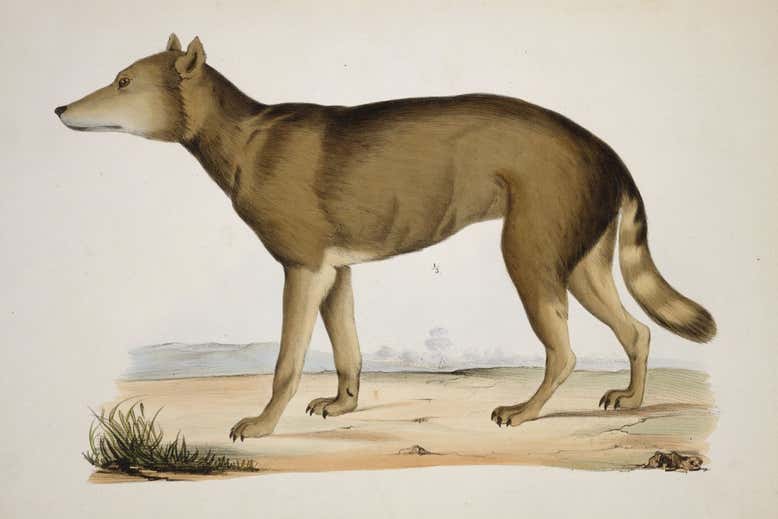The Closest Wolves Related To Modern Dogs Is The Extinct Japanese Wolf
According to a study that sequenced nine museum species’ genomes, the Japanese wolf was found to be closer to the ancestors of a human’s best friend dog than any other wolves. Unfortunately, the Japanese wolf went extinct more than a century ago.

The extinct Japanese wolf (Canis lupus hodophilax)
The Natural History Museum / Alamy
“I didn’t expect this conclusion at all,” said Yohey Terai, a Professor at Yokohama National University in Japan.
Although it has been known for a long time that dogs eventually evolved from grey-wolf, modern wolves are tough to relate with dogs. Every scientist around the globe agrees on the assumption that dogs did actually evolve from wolves in the past. The question to answer is from which wolves and where from?
The Japanese Wolf ( Canis lupus hodophilax) was a subspecies of grey wolves. Since it went extinct back in 1905, the only way the DNA can be gathered is through museum specimens. Terai and his associates extracted tissue samples, mainly of bones, which they will use for DNA extraction.
They compared these gene sequences with other wolves and dogs, and the result showed that indeed the Japanese Wolves are a part of evolutionary branches of wolves from less than forty thousand years ago. While some of these wolves became Japanese wolves, others gave birth to dogs.
This split was most likely to have occurred in East Asia, which suggests that this region is where the direct wolf ancestor of dog scouts lived. Terai plans to extract DNA from the ancient wolf bones in this area to confirm his theory, but to find bones in a better condition where DNA is well preserved will be very hard.
Terai believes that proving that the ancestor wolves of dogs came from East Asia is just a little advancement. They actually need to know where the domestication of the ancestor of modern dogs began from.
Terai states that it is impossible to determine when dogs and humans started having such friendly relationship using genome data. This requires archaeological evidence.
It also became evident that there was interbreeding after the initial split between the Japanese wolf and early dogs. This couldn’t have happened before the last ten thousand years because only 2 percent of a 10,000-year-old specimen matches Japanese wolves. This led the team to believe that interbreeding should have occurred before the species moved into Japan.
The highest resemblance of modern dogs to Japanese wolves in terms of DNA was found to be only five percent! Dingoes and New Guinea Dogs were compared for this number.
Also read about Japanese People Have DNA That Resembles With 3 Ancient Populations
